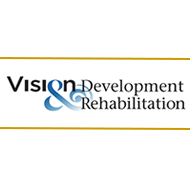Background: Reading performance is essential to a child’s academic success. Reading is a complex task involving the integration of language, attention, information processing including eye movements. Efficient eye movements provide a physical foundation for proficient reading and these skills can be improved as multiple studies have reported successful outcomes following training. Data from these studies are summarized and presented to examine the effect of the training program across a wide demographic and large student population. Subgroup analyses further lend insight to ideal timing and length of training.
Methods: Data from five investigations of in-school training programs were combined and analyzed. Study participants were randomized into treatment or control groups. Students 1st through 4th grade (n=611, 7.0 ± 0.8 years) underwent eighteen, 20-minute sessions utilizing King-Devick (K-D) Reading Acceleration Program (RAP). Reading fluency and comprehension was assessed pre- and post-treatment.
Results: The treatment group had significantly greater improvement compared to the control group in fluency (8.9% vs. 5.9%, p<0.001) and comprehension (9.1% vs. 3.1%, p<0.001). A separate group of high-needs students (n=111) also improved significantly in fluency (p<0.001) and comprehension (p<0.001). An extra-training group, who received an average of 11 additional treatment sessions, improved significantly in fluency and comprehension following extra-training (p=0.003, p=0.013). There was a greater improvement in reading comprehension for students receiving intervention in the fall as compared to the spring (10.9% vs 8.1%, p<0.001).
Conclusions: Improving reading skills in youth is essential to building foundations for future academic success. Efficient eye movements are one necessary component of proficient reading that integrate with visual processing, word decoding and attention span. K-D RAP improves aspects of reading that are not currently addressed in schools. Based on the positive reading outcomes there is increasing evidence supporting the inclusion of teaching the physical act of reading in the early education curriculum nation-wide.
Summary Points:
- The treatment group had significantly greater improvement compared to the control group in fluency (8.9% vs. 5.9%, p<0.001) and comprehension (9.1% vs. 3.1%, p<0.001).
- A separate group of high-needs students (n=111) also improved significantly in fluency (p<0.001) and comprehension (p<0.001).
- An extra-training group, who received an average of 11 additional treatment sessions, improved significantly in fluency and comprehension following extra-training (p=0.003, p=0.013).
- There was a greater improvement in reading comprehension for students receiving intervention in the fall as compared to the spring (10.9% vs 8.1%, p<0.001).
- During the training, out of 611 students, 97.6% improved in reading fluency and 90.2% improved in reading comprehension.

